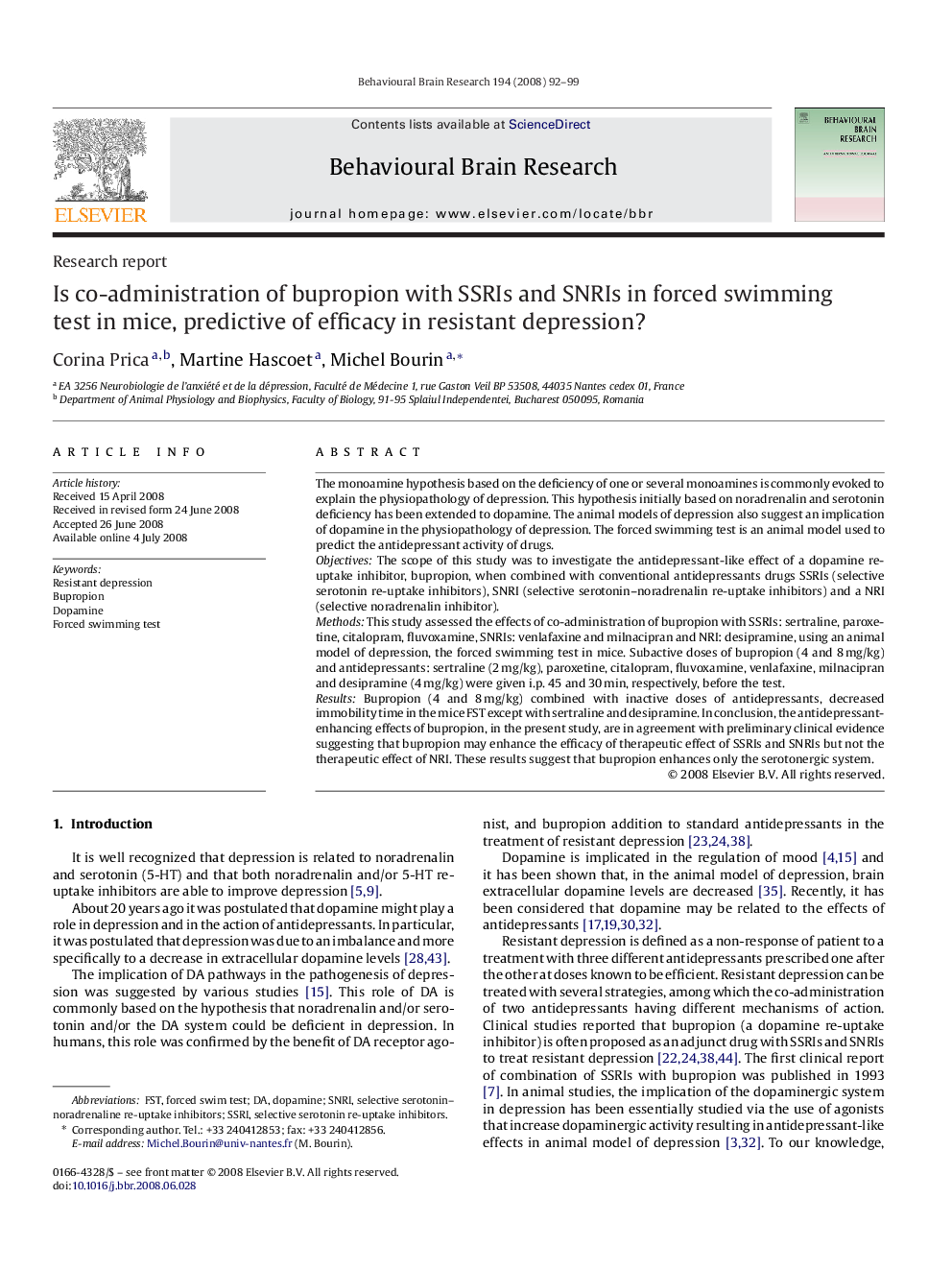| Article ID | Journal | Published Year | Pages | File Type |
|---|---|---|---|---|
| 4315040 | Behavioural Brain Research | 2008 | 8 Pages |
The monoamine hypothesis based on the deficiency of one or several monoamines is commonly evoked to explain the physiopathology of depression. This hypothesis initially based on noradrenalin and serotonin deficiency has been extended to dopamine. The animal models of depression also suggest an implication of dopamine in the physiopathology of depression. The forced swimming test is an animal model used to predict the antidepressant activity of drugs.ObjectivesThe scope of this study was to investigate the antidepressant-like effect of a dopamine re-uptake inhibitor, bupropion, when combined with conventional antidepressants drugs SSRIs (selective serotonin re-uptake inhibitors), SNRI (selective serotonin–noradrenalin re-uptake inhibitors) and a NRI (selective noradrenalin inhibitor).MethodsThis study assessed the effects of co-administration of bupropion with SSRIs: sertraline, paroxetine, citalopram, fluvoxamine, SNRIs: venlafaxine and milnacipran and NRI: desipramine, using an animal model of depression, the forced swimming test in mice. Subactive doses of bupropion (4 and 8 mg/kg) and antidepressants: sertraline (2 mg/kg), paroxetine, citalopram, fluvoxamine, venlafaxine, milnacipran and desipramine (4 mg/kg) were given i.p. 45 and 30 min, respectively, before the test.ResultsBupropion (4 and 8 mg/kg) combined with inactive doses of antidepressants, decreased immobility time in the mice FST except with sertraline and desipramine. In conclusion, the antidepressant-enhancing effects of bupropion, in the present study, are in agreement with preliminary clinical evidence suggesting that bupropion may enhance the efficacy of therapeutic effect of SSRIs and SNRIs but not the therapeutic effect of NRI. These results suggest that bupropion enhances only the serotonergic system.
